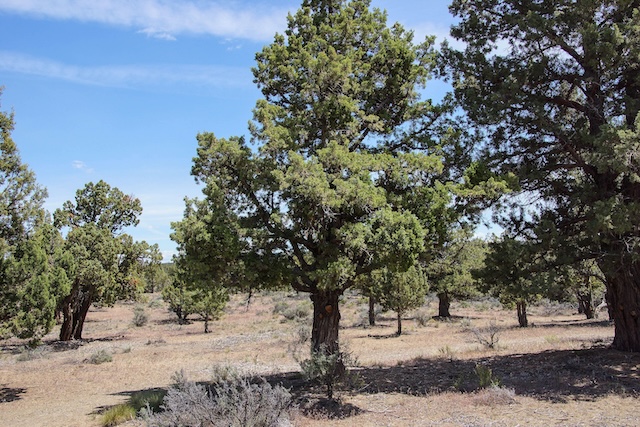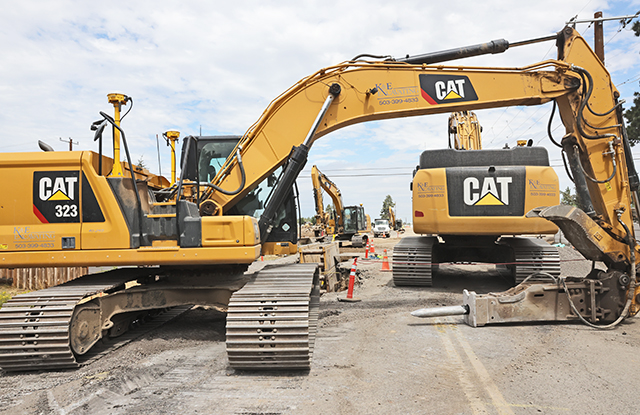Deschutes County challenged on pattern of rural rezoning
Published 2:43 pm Friday, April 11, 2025

- Rural Deschutes County. (123rf)
When developers went to build on an 80-acre tract of rural land near the Bend Municipal Airport, developers had to blast the land with dynamite to break through the lava rock in order to lay down sewer lines.
“It was just total rock out there,” said Dave Swisher, a Bend real estate developer who sold the land.
The land had never been used for farming, and there was no question as to whether it was farmable or not, he said. But the property had one of the most restrictive zones under the Oregon land use system — exclusive farm use — meant to preserve farmland outside of cities from development.
Trending
Swisher applied for and was granted a zone change for the property. The land is part of a larger pattern in Deschutes County in which individual property owners are rezoning land with farm or forest designation to a zone that allows low-density housing. As demand for rural housing continues to rise, Deschutes County has allowed more of these land conversions than any other county in the state. A majority of Deschutes County Commissioners say low-density housing is the best use for lands that would not otherwise be used. But some people are concerned the trend threatens open space and will lead to sprawling rural development.
Land-use watchdog group Central Oregon LandWatch has been a frequent challenger of individual zone change applications in Deschutes County. Earlier this year the group took aim at the county’s newly-adopted comprehensive plan, a 20-year blueprint for local land use, arguing that without checks on conversion of agricultural land, it wasn’t aligned with state land use planning goals.
When the group appealed the county’s plan to the state Land Use Board of Appeals, the county chose to hold a public hearing to reconsider. That will take place April 23.
“We feel somewhat validated,” said Rory Isbell, rural lands program director for Central Oregon LandWatch.
Primed for growth
Since 2007, the county has approved more than 1,500 acres of land to be converted out of the exclusive farm use zone. A majority of applications have occurred in the past three years. Another 1,200 acres are either awaiting approval or caught in an appeal with the state land board.
Peter Gutowsky, the county’s community development director, has kept a watchful eye on the zone changes, entering the size and location of each into a spreadsheet. A map he created last year shows a handful of the recently-converted parcels lying just outside the eastern edge of Bend’s urban growth boundary. Presumably, those property owners are priming themselves to be added to the boundary the next time the city expands.
Trending
Some of the properties are already inside Bend’s growth boundary. Nearly 600 acres among several parcels in the Stevens Road area had to be stripped of their agricultural designation before coming into the city. In 2021, special state legislation allowed the city to quickly add the lands in order to boost housing supply.
Others are much farther away from cities. In 2022, the county approved its largest zone change to date — 710 acres west of Terrebonne, slated to become 71 luxury homes on 10 acre lots, the smallest lot size allowed on rural land. Central Oregon LandWatch appealed the zone change to the Land Use Board of Appeals. That appeal is still pending.
Zoning policies could determine future of unused lands
The wave of zone changes stems from the inception of Oregon’s statewide land use system created in the 1970s. To begin the comprehensive planning process, counties inventoried all of their rural lands.
“Back then, we were a rural county in ways that we are no longer a rural county today,” Gutowsky said.
Rural lands that met the state’s definition of agricultural — those with capable soils or that lend themselves to other farmland nearby — were prescribed the exclusive farm use zone. The premise for the landmark system was that housing and population growth should be contained within urban growth boundaries, while leaving farmland and forests open for those uses.
But with Central Oregon’s cold temperatures and limited water availability, farming is not easy. And the region has consistently been the fastest growing in the state per capita, making the land more valuable as real estate.
“Land is.. we’re not making any more of it,” said Darrin Kelleher, a Bend real estate developer. There’s a lot of it out there that’s really zoned in a fashion that really makes it unusable.” He helped a family friend last year rezone a 40-acre property about 9 miles north of Bend between Tumalo and U.S. Highway 97.
Owners who want to rezone their properties can apply for a change through the county and must demonstrate the land does not have suitable soils for agriculture and can’t be incorporated into nearby farming operations. To do this, property owners hire soil scientists, land use consultants and other experts to make a case before the county commission.
According to Gutowsky, the county’s comprehensive plan simply acknowledges that this case-by-case rezoning process exists.
“I don’t think that the existing policy is showing any kind of bias or preferential treatment in any way,” he said. “It’s just saying this is a process that’s available in Deschutes County like it is in all other 35 counties.”
That part of the comprehensive plan has been in place for more than 10 years, Gutowsky said. Property owners have successfully had their lands redesignated for non-farm uses even when appealed to the state’s Land Use Board of Appeals.
County commissioners Patti Adair and Tony DeBone, who approved the comprehensive plan in October, voted to keep the door open for zone changes.
DeBone said he views the issue as one of private property rights.
“Somebody has the title to a piece of land and they want to do something else with it… generally that’s okay. We already have a lot of checks and balances,” DeBone said.
Adair said she supports farming, but Deschutes County’s climate doesn’t allow it in many places. And, the rural homes bring in revenue for the county.
“We do a lot of affordable housing,” she said. “You’ve got to have people who pay property taxes too.”
For commissioner Phil Chang, policy around rezoning of rural lands was one of the reasons he voted “no” on the county’s comprehensive plan in October. The county’s process, he said, amounts to a “luxury rural residential sprawl industrial complex.” He believes it’s too easy for property owners to paint a picture of their property that discounts potential resource uses.
“You could argue that essentially the process has been weaponized to facilitate rural residential sprawl,” he said.
State process goes unused
For land use advocacy groups, allowing case-by-case rezoning of agriculturally-zoned lands conflicts with the goals of the state’s land use system.
In 2009, the Oregon Legislature recognized that there were lands that could have been improperly zoned decades ago. It created a comprehensive process — nicknamed the “Big Look” — for counties to correct zoning of these mistaken lands. Through the process, counties could work with state agencies to examine development patterns, habitat, services, water, fire and roads and determine how uses might fit together across large areas.
But in 15 years, no county has taken advantage of the process, said Hilary Foote, farm and forest specialist with the Department of Land Conservation and Development, the state agency responsible for reviewing land conversions. Instead, counties are approving zone changes on a site-specific basis in a growing trend over the past six years, Foote said.
According to Gutowsky, Deschutes County last decade came up with a plan to identify potential non-resource lands on a larger scale through the legislative process, but found out it didn’t qualify because of nuances in the bill. Lands only qualify if counties can prove they made a mapping error based on information available when the lands were first designated — not if a new analysis shows the lands aren’t farmable.
“We have basically exhausted opportunities like the Big Look legislation,” Gutowsky said. “The only option now, barring changes to state law, is for property owners to take it upon themselves.”









